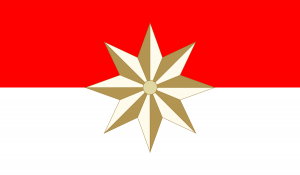Language/Sundanese/Grammar/How-to-Use-Be
Hi Sundanese learners! 😊
In this lesson, we will learn how to use the verb "be" in Sundanese. The verb "be" is an important verb to know in any language, and in Sundanese, it is no different. Understanding how to use "be" properly will help you in many different situations. So, let's get started!
Consider broadening your understanding by checking out these related lessons: Give your Opinion & Pronouns.
"Be" in Sundanese[edit | edit source]
"Be" is translated in Sundanese as "ngan" or "teu". Depending on the context, one of these two forms will be used.
"Ngan" is used to indicate the presence of something or someone. For example, "I am here" would be "Abdi ngan di dieu" in Sundanese.
"Teu" is used to indicate the absence of something or someone. For example, "I am not here" would be "Abdi teu di dieu" in Sundanese.
Let's look at some more examples:
| Sundanese | Pronunciation | English |
|---|---|---|
| Abdi ngan di dieu | ˈabdi ŋan di ˈdieu | I am here |
| Saha ngan di bumi? | ˈsaha ŋan di ˈbumi | Who is here on Earth? |
| Ti wae nu ngan nongtona? | ti ˈwae̯ nu ŋan nɔŋˈtɔna | What is that thing over there? |
| Abdi teu di dieu | ˈabdi tɛu̯ di ˈdieu | I am not here |
| Eta teu ngan di kamar? | ˈɛta tɛu̯ ŋan di ˈkamar | Is he not here in the room? |
| Saha teu ngan di kelas? | ˈsaha tɛu̯ ŋan di ˈkelas | Who is not present in class? |
As you can see from the example sentences, "ngan" and "teu" are used according to whether someone or something is present or absent. This is very important when constructing sentences, so make sure you pay attention to this when learning Sundanese grammar.
Using "Be" with Adjectives[edit | edit source]
In Sundanese, "be" is also used to express states of being. In this case, the verb "be" is used with an adjective to describe the state. Let's look at some examples:
| Sundanese | Pronunciation | English |
|---|---|---|
| Abdi dieu baik | ˈabdi ˈdieu bai̯k | I am good here |
| Ieu buka apik | i.ˈɛu̯ ˈbuka ˈapik | This is not nice |
| Eta ngamumuléhkeun beuki | ˈɛta ŋamumuˈlɛh.kən ˌbeu̯.ki | He looks handsome |
In these sentences, "be" is used in combination with an adjective to describe a state of being. "Baik" means "good", "apik" means "nice", and "beuki" means "handsome". Notice how "ngamumuléhkeun" is used to mean "looks" in the last sentence. This is an example of a verb modifying another verb in Sundanese.
Dialogue[edit | edit source]
Let's have a dialogue now to see how "be" is used in context:
- Person 1: Abdi ngan di kosan ieu. (I am here in this boarding house.)
- Person 2: Saha ngan di kosan sanés? (Who is here in that boarding house?)
- Person 1: Kuring, teman kuring, sareng tetangga kuring (Me, my friend, and my neighbor.)
- Person 2: Kapan teu ngan di kosan? (When are you not present in the boarding house?)
- Person 1: Teu aya, raraga sok di kosan. (Never, my body is often in the boarding house.)
Conclusion[edit | edit source]
Congratulations! You have learned how to use "be" in Sundanese. As you can see, "be" is a very important verb that is used to indicate presence, absence, and states of being. If you want to improve your Sundanese Grammer, you can also use the Polyglot Club website. Find native speakers and ask them any questions!
➡ If you have any questions, please ask them in the comments section below.
➡ Feel free to edit this wiki page if you think it can be improved. 😎
Upon wrapping up this lesson, take a look at these related pages: Plurals & Negation.
Other Lessons[edit | edit source]

